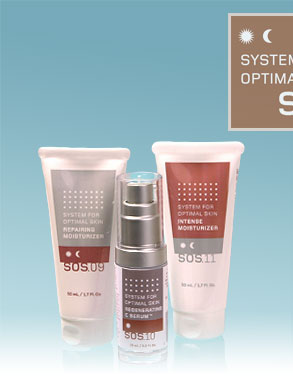Anti-Aging:
A Holistic Approach
Part Two – A Healthy Body
In the previous article we outlined the importance of a healthy
mind in a holistic approach to anti-aging, and touched on a number
of things that you can do to insure that your mind is functioning
at an optimal level. Now it is time to look in more detail at the
second piece of the puzzle: a healthy body.
Once again, we must put everything in context and endeavor to
separate fact from fiction. You cannot pick up a magazine or turn
on the television without seeing some huckster promising you an
amazing lean, sculptured body if you follow their regimen or buy
their products. The reality, however, is that the issue is both
simpler and more complicated than these evangelists of healthy
profits would have you believe. A healthy body, like a healthy
mind, is the result of a combination of both defensive and offensive
actions that you should take in your day-to-day life. Just as all
of the physical activity in the world will not benefit you optimally
if you live or work in an environment that is so smoky that you
cannot see beyond the end of your arm, neither will living in a
healthy environment help you if your intake of saturated fats is
ten times the recommended daily level. In this article we will
look at some basic issues that affect our bodies and examine things
that we can do to optimize our basic physical health.
Even with all of the bad publicity that smoking has received over
the past few years, the vast majority of the population does not
know the full extent to which it is damaging to our bodies. While
the effects of smoking on our lungs and hearts is common knowledge,
few people realize that smoking actually causes permanent vascular
damage and that its negative effects can have a domino effect throughout
the body; triggering many problems that we may not traditionally
associate with either smoking or second hand smoke.
For example, few people are aware of the detrimental effects
that smoking has on the musculoskeletal system (the bones, joints
and muscles). Studies have shown that even a mild degree of exposure
to tobacco smoke can cause:
- Decreased bone density
- Lumbar disk problems
- Higher risk of sustaining hip and wrist fractures
- A high risk of failure of bone fusion in fractures
and grafts
- Lower back pain
- Decreased wound healing ability
- Increased risk of postoperative infection
The detrimental effects of smoking do not end there. Smoking has
also been connected to such gastrointestinal conditions as diverticulitis,
inflammatory bowel disease and peptic ulcers. Furthermore, cyanidem,
which is found in tobacco smoke, interferes with thyroid hormone
production, and has been shown to play a role in both autoimmune
thyroid diseases such as graves disease, as well as hypothyroidism.
In addition, smoking plays a roll in cataracts, macular degeneration
and other eye disorders, and appears to be a contributory factor
in baldness, premature graying, hearing loss and gum disease.
It
is impossible to put enough emphasis on the importance of a smoke-free
lifestyle to maintaining a healthy body, and we should all take
whatever steps are necessary to minimize, if not eliminate completely,
the amount of smoke that we are exposed to in our day-to-day lives.
Luckily, we are living in a society where it is becoming increasingly
less acceptable to smoke in public, and where, therefore, people
are being exposed to second-hand-smoke less and less all the time.
Remember, clinical studies have shown that, unless you already
have cancer or emphysema, our bodies begin repairing the damage
to the respiratory system within days of quitting smoking and much
of the damage done is, in fact, reversible.
How many times have we all heard the time-worn adage: "you are
what you eat"? As children our mothers did their best to steer
us away from such oh-so-seductive delicacies such as Twinkies and
potato chips and tried to force us to eat our veggies; and with
good reason. It seems that every time you turn around there is
a new diet being touted, and diets seem to go in and out of favor
more often than hairstyles. Whether it is the Atkins diet or Richard
Simmons' Deal-a-Meal, it is extremely difficult to separate fact
from fiction and know what is the best thing to do. With so much
information out there about a healthy diet, much of it contradictory
in nature, we have decided that instead of going into great detail,
we will simply touch on a few basic principles that you should
follow as part of any long-term healthy diet.
- Ensure that your basic vitamin and mineral requirements
are met
- Eat a balanced diet with emphasis on vegetables and
fruits
- Eat enough to sustain your body, but not to excess
- Avoid fatty and sugary foods as much as possible
- Do not eat before you go to bed
There are a myriad of sources from which you can learn about the
principles of a healthy, age-smart diet but, no matter what you
do, you must keep in mind the principle that the fuel that you
put into your body will be reflected in both the way you look and
the way you feel.
It almost seems too obvious that, in order to keep a body healthy,
you have to exercise regularly to keep physically fit. Again, like
nutrition, you cannot turn on the television without being bombarded
by a litany of advertisements for products and programs that promise
you the body of a supermodel with only 5 easy payments and 15 minutes
a day. Alas, anything that seems too good to be true probably is,
and, to the best of my knowledge, there are no supermodels out
there who got their physiques by using equipment such as the abflex.
Where physical fitness is concerned there are no shortcuts – The
first, last, and only way to keep fit is through exercise.
As with a healthy diet, with so many sources available to teach
us about beneficial exercise routines, for this article we will
only discuss a few basic principles that everyone should know about
keeping physically fit.
- Regular exercise need not be strenuous: even a walk
will have beneficial effects on both the cardio-pulmonary system
and the musculoskeletal system.
- The body continues to burn calories for up to 30
minutes after a workout, so many shorter workouts a week are
more beneficial than one or two longer ones
- Any fitness routine should include a balance of both
resistance and cardio exercises
- Weight training is the single most important form
of exercise a mid-life women can do to maintain bone density,
muscle mass and good body image
A healthy diet and regular exercise routine form the basis of
a healthy physical lifestyle, which, ultimately, is what we want
to achieve in order to stay young as long as possible. While it
may seem obvious, simply taking care of our bodies is the vital
first step along the road that leads to a healthy, long life; and
is a critical piece of the anti-aging puzzle. Combined with a healthy
mind, a healthy body completes the foundation of the anti-aging
edifice and prepares the body for the final step: healthy skin.
|

